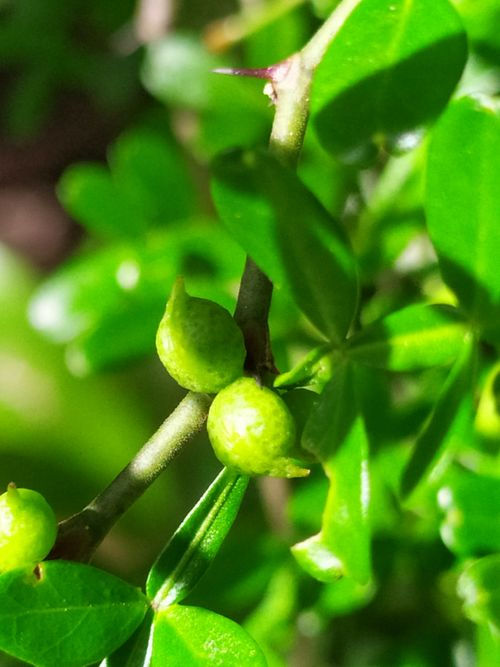Don't mix up your Fingrigo from your Fingrigs!
- Christina Welch
- Aug 17
- 2 min read
The two plants with the common name of Fingrigo and Fingrigs fascinate me. Anderson notes that both help with 'female obstructions'.
Fingrigo is the Pisonia aculeata, and Fingrigs, the Fagara tragodes (now Zanthoxylum tragodes) a plant with a number of synonyms including Zanthoxylum spinifex. Both plants are listed in Jerome S. Handler and JoAnn Jacoby's paper 'Slave Medicine and Plant Use in Barbados' (1993) which is available online here.
Handler and Jacoby state of Fingrigo, that is is native to Barbados and was used, according to Hans Sloane by enslaved Africans in Jamaica to treat the 'clap', and slightly later in time there, to treat the last stages of gonorrhea. Interestingly, Sloane's Fingrigo is Zanthoxylum spinifex, the plant Anderson calls Pisonia aculeata. Of this plant (Pisonia aculeata), Handler and Jacoby note it is 'probably not the same species referred to by Sloane' but that the root is used in Cuba to 'cure gonorrhea' and that Anderson noted it as a 'effectual remedy for venereal complaints'.
As you can see, this is all quite confusing but both plants Anderson writes help with 'female obstructions', something that Sloane, nor Hander and Jacoby note.
Anderson writes that the leaves of Pisonia aculeata (Fingrigo) mixed with oats or corn 'destroys worms in Horses', whilst a decoction of the leaves removes female obstructions'. of the latter remedy Anderson is clear to state that 'they say' without specifying who 'they are'. I assume this means it is common knowledge.
Anderson writes of Fagara tragodes (Barbados Fingrigs), that the roots 'are in great repute in many Female obstructions'; the plant was sent to him in 1786 from Barbados by a Mrs Parry who sent Anderson plants a few times and was clearly an amateur botanist and Anderson notes it was not a plant seen in St Vincent at the time.
So what might these plants have cured? The Useful Tropical Plants online states that a decoction of the bark and leaves of the Pisonia aculeata is used to relieve rheumatism and venereal diseases, but don't list the Zanthoxylum spinifex. Posonia aculeata is noted elsewhere as being used to treat respiratory issues, and inflammation. The Zanthoxylum species of plants seem to have numerous cures. But nowhere can I find anything about these mysterious 'female obstructions', and as such I am at a loss to know what they were.
The two plants are very clearly different species but that Sloane and Anderson are at odds about vernacular names is not surprising as historical plants nomenclature is not simple and the same name was often given to different plant species in different islands, or even different plants of the same island. So, please NEVER use historic plant cures as if you mix up your Fingrigo and Fingrigs, then goodness only knows that it might do to you!





Comments